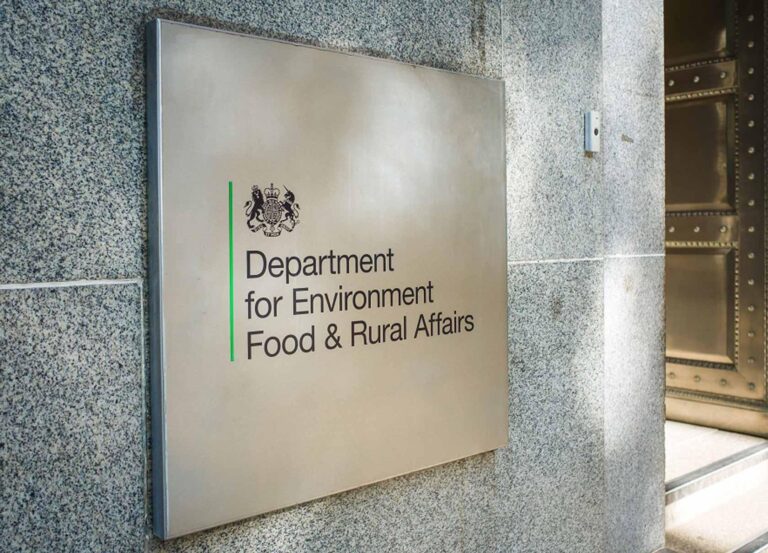Over the past year, the UK’s agrifood sector has undergone significant shifts driven by evolving government policies, technological innovation, and market pressures. As the industry tackles challenges ranging from sustainability targets to supply chain resilience, stakeholders have closely monitored the government’s strategic approach to securing the future of British agriculture and food production. In this article, we take a comprehensive look at the 12 months of the UK agrifood strategy-examining key initiatives, progress made, and the emerging priorities that will shape the sector’s trajectory in the months ahead.
UK Agrifood Strategy Advances Sustainable Farming Practices
Over the past year, the UK has made significant strides in reshaping its agricultural landscape by prioritizing sustainable methods. Key initiatives have focused on reducing carbon emissions, conserving biodiversity, and enhancing soil health through innovative farming techniques. Government-backed programs have incentivized farmers to adopt precision agriculture technologies, organic farming, and agroforestry, aligning economic goals with environmental stewardship. This multidimensional approach aims not only to boost farm productivity but also to safeguard natural resources for future generations.
Several targeted actions have been central to these efforts, including:
- Support for regenerative agriculture through grants and training schemes
- Expanding sustainable supply chains by fostering collaboration between producers, processors, and retailers
- Integrating digital tools to optimize resource use and reduce waste
Such measures are complemented by ongoing research projects that monitor environmental outcomes and economic viability. The table below summarizes the core focus areas and anticipated impacts of these sustainable practices:
| Focus Area | Expected Outcome | Current Adoption Rate |
|---|---|---|
| Soil Health Improvement | Increased fertility & carbon sequestration | 45% |
| Precision Farming | Resource efficiency & reduced input costs | 38% |
| Agroforestry Systems | Biodiversity enhancement & climate resilience | 22% |
Investment Trends Shaping Innovation Across the Agritech Sector
Venture capital flows in the UK agritech landscape have increasingly gravitated toward startups harnessing AI-driven precision agriculture and sustainable farming technologies. Investors are zeroing in on solutions that optimize resource efficiency-such as water use and fertilizer application-enabling producers to meet stringent environmental standards while driving yield improvements. Notably, climate-resilient crop innovations and vertical farming systems have captured the market’s imagination, reflecting a paradigm shift towards urban and high-tech agriculture. Meanwhile, partnerships between agri-focused funds and government-backed initiatives are catalyzing the scaling of prototypes into commercially viable models, setting the stage for a more resilient food system.
Funding patterns reveal a growing appetite for diversification within agritech portfolios, with emerging interest areas including:
- Biological inputs: Biopesticides and biofertilizers offering eco-friendly alternatives to synthetic chemicals
- Supply chain digitization: Blockchain-enabled traceability platforms enhancing food provenance and safety
- Alternative proteins: Innovations in plant-based and cultivated meat technologies responding to shifting consumer preferences
| Investment Area | Funding Growth (YoY) | Key Drivers |
|---|---|---|
| Precision Agriculture | +42% | AI & IoT adoption, yield optimization |
| Biological Inputs | +35% | Regulatory pressure, sustainability demands |
| Supply Chain Tech | +28% | Transparency, traceability needs |
| Alternative Proteins | +50% | Consumer trends, environmental impact |
Policy Recommendations to Enhance Food Security and Export Potential
To bolster the UK’s position as a resilient food producer and exporter, policymakers must prioritize investments in cutting-edge agricultural technologies and sustainable practices. Emphasizing precision farming, digital supply chain monitoring, and climate-resilient crop development will not only enhance domestic food security but also create competitive advantages in global markets. Additionally, streamlining regulatory frameworks to support innovation and reduce bureaucratic delays is crucial for fast-tracking product approvals and export certifications.
Equally important is addressing workforce challenges and infrastructure bottlenecks through targeted initiatives that attract new talent and modernize logistics networks. The table below outlines key policy actions and their projected impacts on the agrifood sector:
| Policy Action | Impact | Timeframe |
|---|---|---|
| R&D grants for agtech startups | Boost innovation & product diversity | 1-3 years |
| Simplified export certification | Accelerated market access | 6-12 months |
| Skills training for rural workforce | Improved labor availability & efficiency | 2-4 years |
| Infrastructure upgrades (transport/storage) | ||
| Infrastructure upgrades (transport/storage) | Enhanced supply chain efficiency and reduced losses | 3-5 years |
If you want, I can also help you with improving the text, converting it into markdown, or generating summaries-just let me know!
Insights and Conclusions
As the UK agrifood sector navigates an evolving landscape shaped by policy shifts, technological innovation, and sustainability goals, the past 12 months have marked significant strides-and notable challenges-in implementing the government’s agrifood strategy. Looking ahead, stakeholders remain focused on fostering resilience, enhancing food security, and accelerating green innovation to meet both domestic needs and global demands. With continued collaboration between policymakers, industry players, and researchers, the next phase of the UK’s agrifood agenda will be critical in defining the future of farming and food production across the country.




